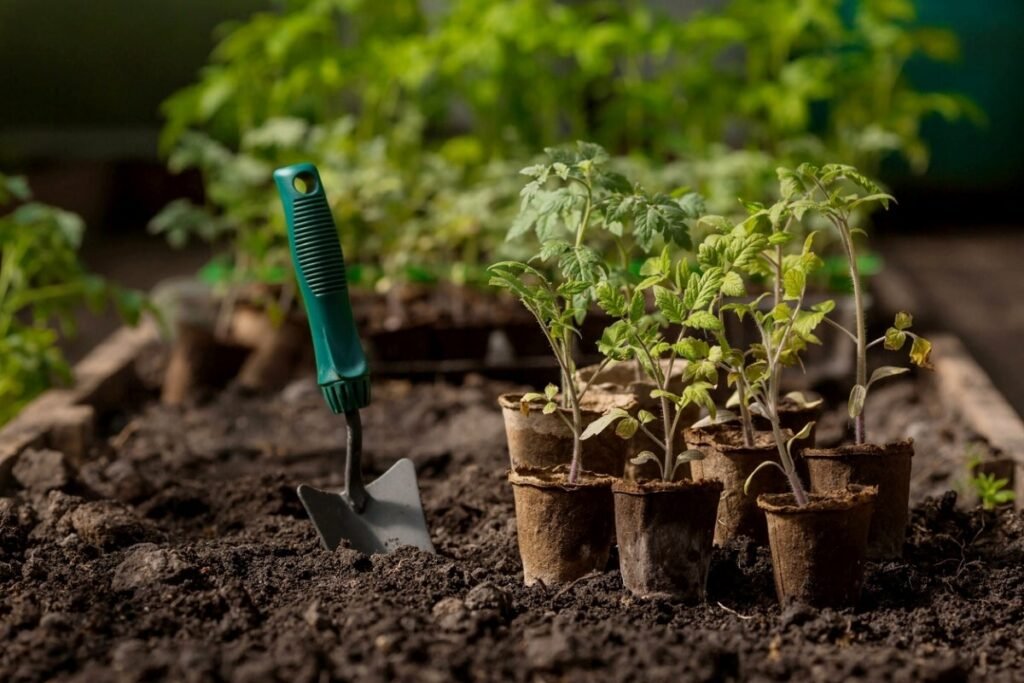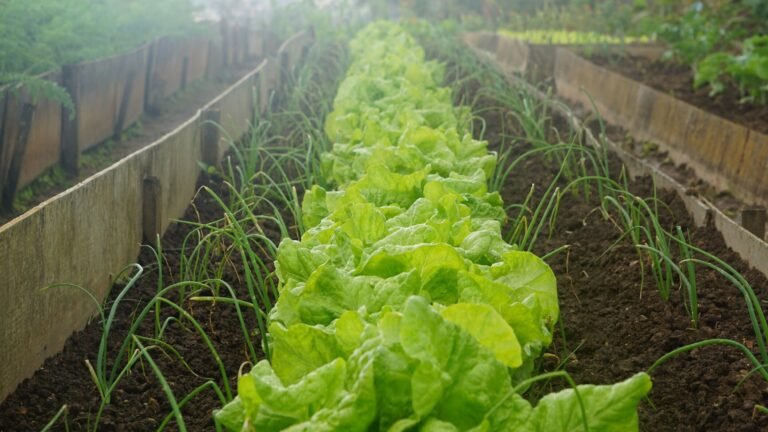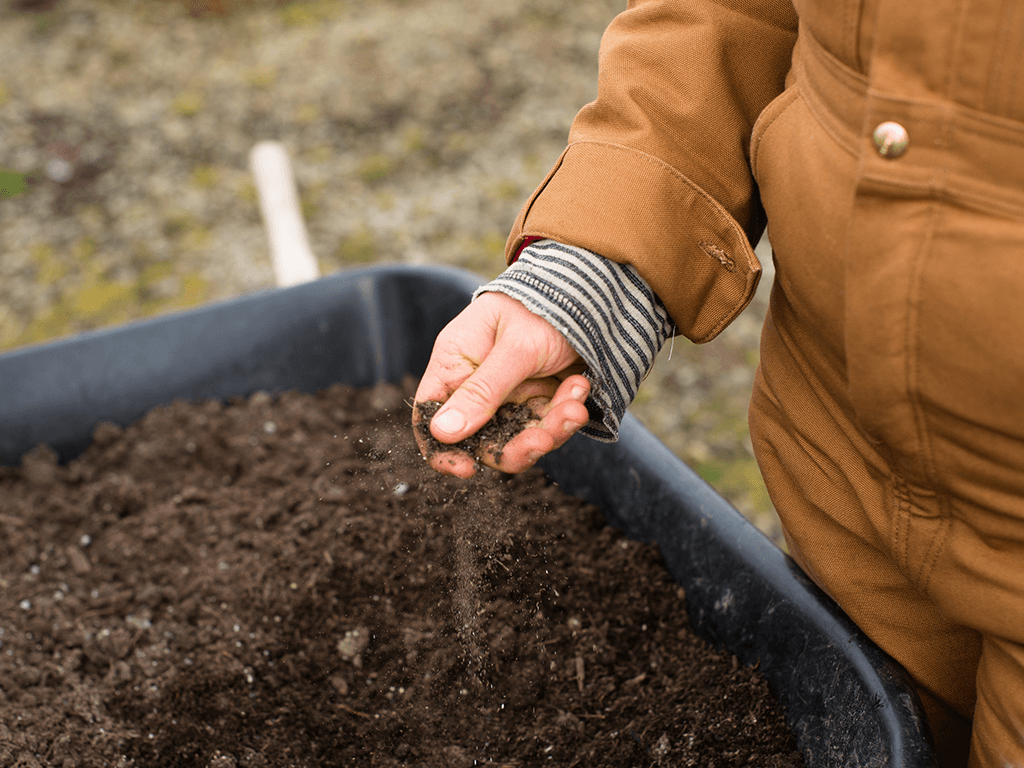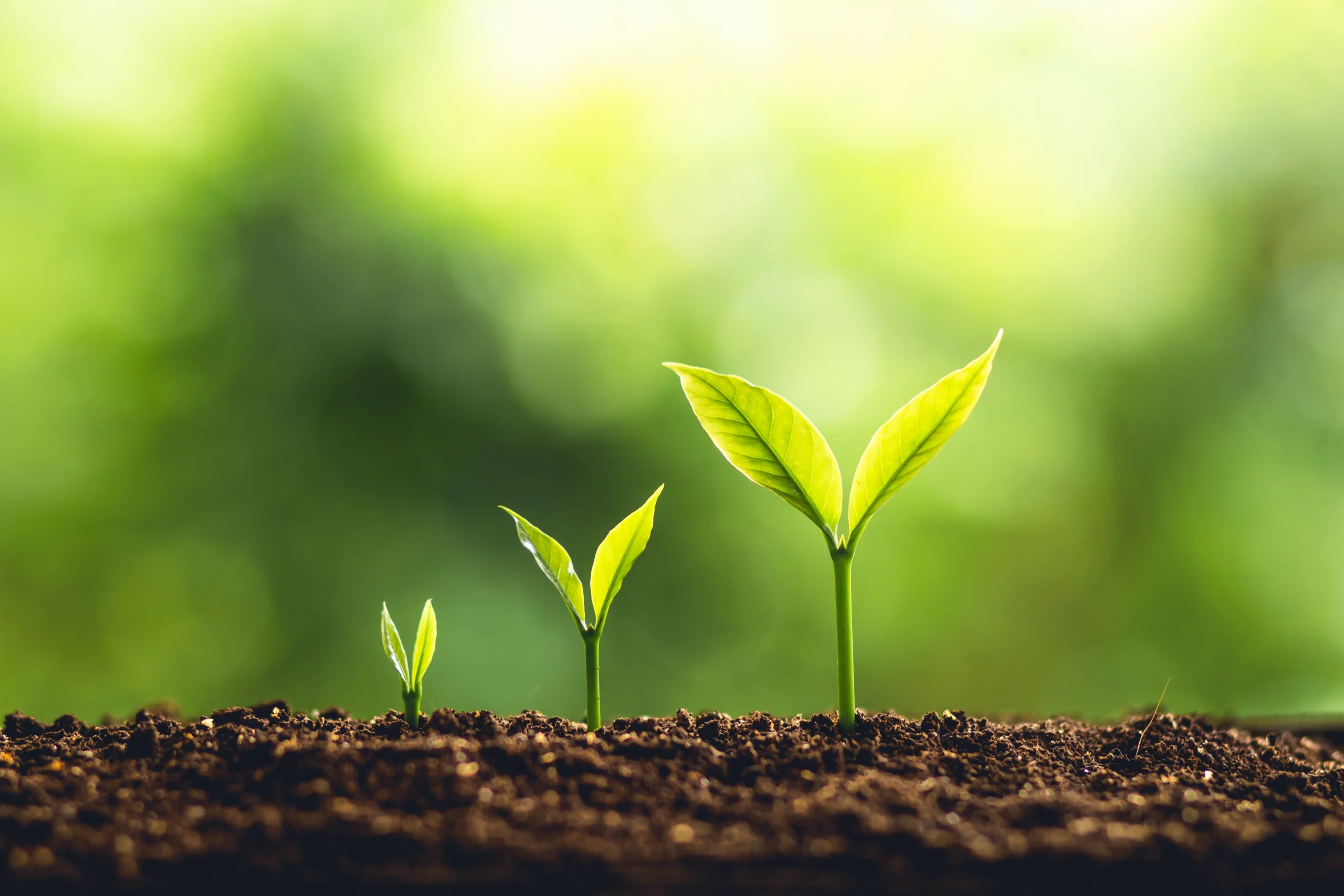From Soil to Soul: 9 Ways to Explore the Healing Power of Gardening for Beginners

"
This article explores essential gardening tips explicitly tailored for beginners, helping you embark on a fruitful gardening journey. Let’s dig in!
Let's dive right in..
- Table of Content
- #1: Start with Easy-to-Grow Plants
- #2: Understand Growing Conditions for Plants
- #3: Prepare the Soil
- #4: Establish a Watering Routine
- #5: Implement Pruning and Deadheading
- #6: Monitor For Pests and Diseases
- #7: Consider Mulching for Weed Management
- #8: Regularly Feed Your Plants
- #9: Observe Plant Growth
- Final Thoughts
Imagine this
You step outside into your own lush paradise, surrounded by vibrant blooms, fragrant herbs, and the gentle rustle of leaves. The pleasure of sipping your morning coffee amidst a sea of blooming flowers, their colors and fragrances, enchanting your senses. Envision the pride and satisfaction of creating a bountiful harvest of organic vegetables, knowing you have nourished your body and soul.
As a potential gardener, this idyllic scene can be your reality. Gardening offers a beautiful escape from the hectic pace of daily life, providing a therapeutic and fulfilling experience for those willing to get their hands dirty.
Whether you have a sprawling backyard or a cozy balcony, cultivating a garden offers a sanctuary where you can immerse yourself in nature and reconnect with the earth. The simple act of tending to plants, watching them flourish under your care, and harvesting the fruits of your labor can bring immense joy and a sense of accomplishment.
Gardening is not just about plants and flowers; it’s a journey of self-discovery and personal growth. It teaches patience, resilience, and the beauty of nurturing living things. As a potential gardener, you can create a sanctuary of beauty and tranquility right outside your door.
#1: Start with Easy-to-Grow Plants
Let's get started
When venturing into gardening as a beginner, it’s wise to begin with plant varieties known for their adaptability and forgiving nature. Here are 10 easy-to-grow plants that will boost your confidence and yield beautiful results:
- Marigolds
- Zinnias
- Basil
- Sunflowers
- Pansies
- Nasturtiums
- Tomatoes (cherry varieties)
- Mint
- Succulents (such as Aloe vera and Jade plant)
- Impatiens, also known as Touch-me-not
Tips for Selecting Healthy Plants
1. Inspect foliage and stems
Look for plants with vibrant and lush foliage. Avoid specimens with yellowing leaves or signs of pests. The stems should be sturdy and free from any visible damage or discoloration.
2. Check root system
If purchasing potted plants, gently tap the container and slide the plant out to examine the roots. Healthy roots should be white or light-colored, not brown or mushy. Avoid plants with densely tangled or circling roots.
3. Avoid plants in bloom
While choosing plants in full bloom may be tempting, selecting those with unopened buds or fewer flowers is best. This allows the plant to focus on establishing its root system before putting energy into blooming.
4. Choose compact plants
Opt for plants that have a compact and bushy growth habit rather than those that appear tall and leggy. Compact plants indicate healthy growth and are less likely to require immediate pruning or staking.
By starting your gardening journey with easy-to-grow plants and selecting healthy specimens, you’ll set yourself up for success. Remember to provide them with the appropriate growing conditions, such as adequate sunlight, well-draining soil, and regular watering, and watch as your garden flourishes with beauty and abundance.
Key Takeaway
By selecting easy-to-grow plants, your garden will flourish in beauty and abundance.
#2: Understand Growing Conditions for Plants
Plants have specific preferences when it comes to sunlight exposure and soil conditions. Understanding their growing requirements is crucial for their overall health and productivity.
Research Ideal Growing Conditions for Different Plants
Before planting, take the time to research the optimal growing conditions for each plant. Some may thrive in full sun, while others prefer partial shade. Similarly, certain plants require well-draining soil, while others flourish in more moisture-retaining soil. By familiarizing yourself with these requirements, you can ensure your plants are given the best environment to thrive.
Here are some suggestions to help you in your research
1. Read plant tags and labels
When purchasing plants from nurseries or garden centers, take the time to read the accompanying plant tags or labels. They often provide valuable information about the plant’s sunlight requirements, water needs, and soil preferences.
2. Consult gardening references
Utilize gardening books, magazines, or reputable online sources to gather information on specific plants. Look for details on the ideal temperature range, sunlight exposure, humidity levels, and soil pH that the plant prefers.
3. Consider your region's climate
Different plants thrive in specific climatic conditions. Determine your hardiness zone, which indicates the average minimum temperature in your region, and choose suitable plants for that zone. This information will help you narrow down your options and select plants that are more likely to thrive in your area.
4. Observe local gardens
Stroll around your neighborhood or visit nearby botanical gardens or parks. Observe the plants that are thriving in similar growing conditions to your own. Note their characteristics and growing habits. This can give you valuable insights into what plants suit your local climate well.
5. Join gardening communities
Engage with fellow gardeners by joining clubs, online forums, or social media groups. Seek advice and guidance from experienced gardeners in your society or apartment with firsthand gardening knowledge in your region. They can offer valuable tips and recommendations based on their own experiences.
6. Provide Support for Climbing Plants
Climbing plants add vertical interest to your garden but require appropriate support structures to thrive. Consider trellises, stakes, or cages to provide support for climbing plants. Plan ahead and install the supports before planting to avoid damaging the roots later on. Secure the plants gently to their supports, allowing them to grow and flourish upwards.
7. Experiment and learn from experience
Gardening is a continuous learning process. As you gain experience, experiment with different plants and growing conditions. Take note of the successes and challenges you encounter along the way. This firsthand knowledge will help you refine your understanding of ideal growing conditions for various plants over time.
Key Takeaway
Researching ideal growing conditions for different plants is crucial for their health and productivity. Take advantage of plant tags, gardening references, local observations, and gardening communities to gather valuable insights.
#3: Prepare the Soil
Just like a solid foundation is essential for a sturdy structure, soil quality greatly influences plant growth and development.
Soil Preparation Techniques for New Garden Beds
Remove any weeds, rocks, or debris if you’re starting a new garden bed. Loosen the soil using a garden fork or tiller, allowing air and water to penetrate easily. Incorporate organic matter, such as compost or well-rotted manure, to enhance the soil’s fertility and structure.
Here are some steps you need to take when prepping your soil
1. Loosen the soil
Use a garden fork, tiller, or spade to loosen the soil to a depth of about 8 to 12 inches (20 to 30 cm). This helps break up compacted soil, improves drainage, and allows roots to penetrate easily.
2. Remove rocks and roots
While loosening the soil, remove any rocks, stones, or large roots that may impede plant growth. These can hinder root development and cause uneven drainage.
3. Incorporate coco peat
Add coco peat to your soil mixture for improved moisture retention and aeration. Coco peat, or coir, is a sustainable and eco-friendly alternative to traditional peat moss. It helps retain moisture in the soil while promoting proper drainage. A general ratio for incorporating coco peat into your soil mixture is 1 part coco peat to 2 parts garden soil.
4. Amend the soil
Incorporate organic matter into the soil to improve its fertility, structure, and nutrient content. Add compost, well-rotted manure, or peat moss to enrich the soil. Mix a layer of organic matter over the top into the loosened soil.
5. Test the soil
Consider testing the soil pH and nutrient levels using a soil testing kit. This will help you identify any deficiencies or imbalances that must be addressed. You can amend the soil with appropriate fertilizers or organic additives based on the test results. Sometimes, your flowers are not blooming could be a pH imbalance issue.
6. Level and smooth the surface
Once you have amended the soil, use a rake or garden hoe to level and smooth the surface of the garden bed. This creates an even planting area and ensures proper water distribution.
7. Allow the soil to settle
After preparing the soil, allow it to settle for a few days before planting. This will give the amended soil time to integrate with the existing soil and stabilize moisture levels.
Key Takeaway
A solid foundation for your garden or plant pots begins with proper soil preparation techniques. Loosening the soil, removing rocks and roots, incorporating coco peat for moisture retention, amending the soil with organic matter, testing the soil, leveling the surface, and settling the soil are crucial steps to ensure optimal plant growth and development.
#4: Establish a Watering Routine
Soil Preparation Techniques for New Garden Beds
Water is a lifeline for plants, and establishing a consistent watering routine is vital for their overall health. Watering too much or too little could drastically affect your plant’s growth.
Let’s explore three everyday watering routines that can be adapted to suit different plant needs:
1. Deep and Infrequent Watering
This method suits plants with deep root systems, such as trees and shrubs. Water the plants deeply, allowing the water to penetrate the soil to reach the roots. Water less frequently but thoroughly, ensuring the soil is moist several inches below the surface. This encourages profound root growth and helps plants become more resilient to drought.
2. Regular Moisture Maintenance
Many garden plants, including annuals, perennials, and vegetables, benefit from consistent moisture in the soil. Water them regularly to maintain even moisture levels, not letting the soil dry out completely. Monitor the soil moisture and adjust the frequency and duration of watering based on weather conditions and the plant’s specific needs.
3. Dry Periods for Succulents
Succulents and cacti have adapted to arid environments and have low water requirements. Water these plants sparingly, allowing the soil to dry out between waterings. Providing excellent drainage and avoiding overwatering is crucial, as these plants are susceptible to root rot in overly moist conditions.
Understand Need of Water in Different Plants
Different plants have varying water requirements. Some prefer consistently moist soil, while others thrive in drier conditions. Research the specific watering needs of each plant in your garden and tailor your watering routine accordingly.
Tips for understanding your water conditions for you plants
1. Research individual plant needs
Different plants have varying water requirements based on their species, size, growth stage, and environmental conditions. Research the specific watering needs of each plant in your garden. Consider their native habitat, drought tolerance, and preferences for soil moisture levels.
2. Check soil moisture
Before watering, check the soil’s moisture level. Insert your finger or a soil moisture meter about an inch into the soil. If it feels dry at that depth, it’s an indication that watering is needed. However, if the soil feels moist or damp, hold off on watering, as excessive moisture can lead to root rot or other water-related issues.
3. Observe plant signals
Pay attention to visual cues from your plants. Wilted or drooping foliage, dry leaf edges, or a general lack of vibrancy may indicate the plant needs watering. Conversely, yellowing leaves or rotting roots can signify overwatering. By observing these signals, you can adjust your watering routine accordingly.
Now
Remember that temperature, humidity, and seasonality can influence watering needs. Be flexible with your watering routines, adapting them as necessary to accommodate changing weather patterns and the individual needs of your plants.
Key Takeaway
Tailor your watering routine based on the specific requirements of each plant, considering factors such as species, size, growth stage, and environmental conditions. Be flexible with your watering routines, considering temperature, humidity, and seasonal variations.
#5: Implement Pruning and Deadheading
Know this
Being lazy with your plants after planting them and watering them occasionally will get you nowhere. Pruning and deadheading are essential to maintain plant health and shape, encouraging continuous blooming.
Techniques for Pruning Different Types of Plants
Understanding how and when to prune different plants is crucial. Regularly remove dead or damaged branches to stimulate new growth and maintain plant form.
When pruning, follow these general tips:
- Identify dead, damaged, or diseased branches and remove them at their base or back to a healthy, outward-facing bud or branch.
- Thin out crowded or crossing branches to improve airflow and light penetration.
- Shape the plant by selectively removing branches to achieve the desired form.
- Make angled cuts just above a bud or side branch to promote new growth. Different types of pruning you need to keep in mind.
1. Hand Pruning
Hand pruning is a versatile technique suitable for a wide range of plants, including shrubs, trees, and perennials. Use clean, sharp pruning shears or secateurs to make precise cuts.
2. Pinching
Pinching is primarily used for herbaceous plants, such as annual flowers and certain herbs. Simply pinch off the tips of new growth using your fingertips or pruning shears. Pinching helps promote branching, resulting in bushier and more compact plants. This technique is often used to control the height and shape of plants and encourage abundant flowering.
3. Heading Back
Heading back involves pruning back the entire length of a branch or stem, usually to a lateral bud or branch. This technique is commonly used for shrubs, hedges, and some trees. Heading back stimulates new growth and helps maintain the desired size and shape of the plant. Make the pruning cut just above a bud or branch junction to encourage new growth in the desired direction.
4. Thinning
Thinning is the selective removal of entire branches or stems to reduce plant density and promote airflow and light penetration. This technique is beneficial for trees, shrubs, and certain perennials. Identify crowded or weak branches and remove them at their base or back to a lateral branch or main stem. Thinning helps improve overall plant health, reduce disease incidence, and maintain an open and balanced structure.
5. Espalier Pruning
Espalier pruning trains and shaping plants against a wall, fence, or trellis. It involves pruning and guiding branches to create a flat, two-dimensional form. Espalier pruning is commonly used for fruit trees and decorative plants. Prune branches that grow in unwanted directions and train others horizontally or vertically along the support structure to achieve the desired espalier pattern.
6. Deadheading
Deadheading involves the removal of spent flowers to encourage continued blooming and prevent the formation of seeds. This technique applies to flowering plants such as roses, annuals, and perennials. Simply trim or pinch off faded flowers just above a healthy set of leaves or buds to promote the development of new blooms.
Key Takeaway
Pruning and deadheading are essential practices for maintaining the health and shape of your plants. By identifying and removing dead, damaged, or diseased branches, thinning out crowded growth, shaping the plant, you can stimulate new growth and maintain the desired form of your plants.
#6: Monitor For Pests and Diseases
Pay close attention
In addition to pruning, another critical aspect of plant care is monitoring and managing pests and diseases. By learning to identify common pests and diseases affecting your plants, you can take proactive measures to protect their health. Keeping an eye out for pests and diseases allows for early detection and effective management, preventing extensive plant damage.
Learn to identify common pests such as aphids, slugs, or fungal diseases like powdery mildew. Inspect your plants regularly, checking both sides of leaves, stems, and flowers. Implement organic pest control methods, like companion planting or natural predators, to maintain a healthy balance in your garden.
Spraying neem water can be an effective organic solution for controlling pests and diseases in your garden. To make neem water, mix approximately 2 teaspoons of neem oil with 1 liter of water and thoroughly stir or shake the mixture. This diluted neem water can then be sprayed onto plants, targeting pests like aphids, mites, whiteflies, and fungal diseases. Remember to cover both sides of the leaves and repeat the application every few weeks or as needed to maintain pest and disease control.
Key Takeaway
Regularly inspecting your plants for common pests and diseases allows for early detection and prompt action. Organic pest control methods can help maintain a healthy balance in your garden. Also, when applied regularly, spraying neem water, a diluted mixture of neem oil and water, can effectively control pests and fungal diseases. By staying vigilant and taking proactive measures, you can protect your plants and ensure a thriving garden.
#7: Consider Mulching for Weed Management
Give it a thought
Mulch is a material layer spread over the soil surface around plants. It serves multiple purposes in the garden, including weed management. Mulch acts as a protective barrier that helps suppress the growth of weeds and reduces weed competition with your desired plants.
Weeds can compete with your plants for resources and hinder their growth. Utilizing mulch is an effective and organic way to suppress weed growth and improve soil moisture retention.
Types of Mulch and Their Application
Choose from various types of mulch, such as
- wood chips
- straw or
- compost
based on your preferences and plant needs. Apply a layer of mulch around your plants, leaving a few inches of space around the stems to prevent moisture accumulation. This helps prevent weeds, conserve soil moisture, and regulate soil temperature.
Key Takeaway
Applying a layer of mulch around your plants, such as wood chips, straw, or compost, can create a protective barrier that suppresses weed growth and conserves soil moisture. Consider and embrace the benefits of mulching for weed management in your gardening practices.
#8: Regularly Feed Your Plants
Don’t forget this
Consider incorporating regular feeding into your gardening routine to ensure your plants receive proper nutrition. Organic fertilizers are often recommended for beginners due to their overall benefits for soil health and plant growth. They gradually release nutrients, reduce the risk of nutrient leaching, and improve the soil’s ability to retain moisture.
Organic and Synthetic Fertilizers for Beginners
Organic fertilizers, such as compost or compost tea, are excellent for beginners. They provide a slow and steady release of nutrients as they break down in the soil. Examples of organic fertilizers include composted manure, bone meal, fish emulsion, and seaweed extract. They enrich the soil with essential nutrients and improve overall soil health.
Synthetic fertilizers can also be used, but ensure proper dosage and follow the instructions carefully to avoid over-fertilization. Synthetic fertilizers often come in granular or water-soluble forms and are labeled with three numbers indicating the ratio of nitrogen (N), phosphorus (P), and potassium (K) they contain. For example, a common synthetic fertilizer might have a label of 10-10-10 or 20-10-10, representing the percentage of each nutrient.
Key Takeaway: Regularly feed your plants with organic fertilizers for their growth and health. Organic fertilizers provide a slow and steady release of nutrients, improving soil health and moisture retention. If using synthetic fertilizers, be cautious with dosage and follow instructions to avoid over-fertilization.
#9: Observe Plant Growth
Let me show you how
Observing plant growth not only contributes to the physical well-being of your garden but also has a profound impact on your mental and spiritual wellness. Witnessing the growth and transformation of plants can be a therapeutic and meditative experience, offering a sense of peace and connection with nature.
As you observe the emergence of delicate seedlings, the unfurling of vibrant leaves, and the blooming of beautiful flowers, you become attuned to the rhythm and cycles of life. This connection with the natural world can instill a sense of awe, wonder, and gratitude, fostering a deeper appreciation for nature’s intricate beauty and resilience.
Engaging in the process of plant growth also provides a sense of purpose and accomplishment, nurturing a sense of fulfillment and satisfaction. Whether it’s tending to a small herb garden or cultivating a backyard garden, observing plant growth allows you to cultivate a vibrant garden and inner peace and harmony within yourself.
Key Takeaway
Letting nature be your guide and actively observing the growth of plants can be a transformative experience, benefiting both your physical and mental well-being. By engaging in the process of plant growth, you not only cultivate a thriving garden but also nurture inner peace, fulfillment, and harmony within yourself.
Final Thoughts
And the outcome is peace.
In the hustle and bustle of modern life, finding solace and tranquility can sometimes feel like a distant dream. However, the beauty of gardening lies in its ability to bring a slice of nature into our lives, no matter how small our space may be. The simple act of nurturing a plant, witnessing its growth, and immersing ourselves in the wonders of the natural world can ignite a spark within us.
It awakens our senses, reminding us of the delicate fragrance of blossoms, the soothing touch of soil, and the symphony of colors that paint our surroundings. Gardening offers a sanctuary where we can find respite from the chaos and find peace in the simplest of things.
So, consider embarking on your gardening journey whether you have a big backyard or a humble balcony. Let the urge to create your paradise or fill the air with the intoxicating scent of plants guide you. Embrace the joy of witnessing life unfold, and let nature’s embrace soothe your soul.
Subscribe to new post
The One Liner
Useful Links
Order Related Queries
Useful Links
Order Related Queries


















